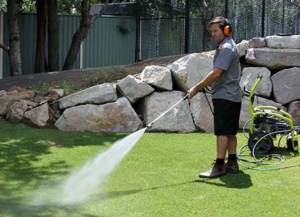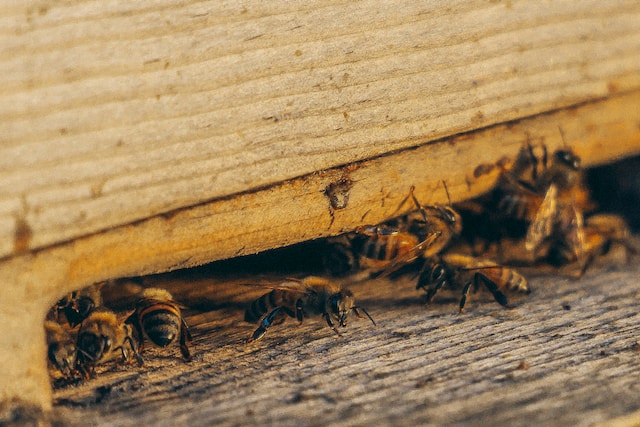Pests are not just a nuisance; they can cause real damage to plants, animals and structures. Pest control is an important part of a healthy, well-maintained landscape and home.
Preventive measures include removing food, water and shelter; fixing leaky pipes; cleaning up messes; and eliminating places where pests breed and hide. Click the https://trappingusa.com/plano/ to know more.

As the name suggests, prevention strategies seek to keep pests away from buildings and materials through sanitation, exclusion and monitoring. This includes keeping wood piles away from structures, clearing brush and debris, cleaning up trash and food scraps and trimming grass and bushes. It also means being proactive about checking and repairing gaps, cracks and other openings into buildings that could allow rodents in or windblown debris to enter.
During the scouting and monitoring stage, threshold-based decision-making is important: noticable but few pests may not necessitate action, but increasing numbers might signal that it’s time to take steps. Thresholds vary by environment and type of pest. For example, finding a few wasps in a garden doesn’t warrant an action plan, but the presence of a large population of them might.
A common method of control involves chemical pesticides, which can be in the form of sprays, dusts or baits. These chemicals disrupt pests’ nervous systems, either killing them or preventing reproduction. They are often regulated by the Environmental Protection Agency and, when mixed and applied correctly by a professional, are not harmful to people or native wildlife. However, they can be harmful to pets and children if inhaled or ingested, so care must be taken with the storage and handling of pesticides, particularly aerosol sprays.
The best way to prevent the use of pesticides is to have a professional conduct regular inspections and maintenance on the building, its materials and surrounding landscape. This will help identify issues that might be attracting pests and lead to an effective treatment plan.
The ideal approach to pest control involves a five-stage strategy called “Avoid, Block, Detect, Respond and Recover/Treat.” Avoiding conditions that encourage infestations is a vital first step, such as improving sanitation, organizing or discarding clutter and sealing and closing off potential entry points. The “block” stage may involve installing and maintaining barriers to pests, such as fencing or caulking. The “detect” stage may include creating sanitary perimeters around floors through the layout of shelving and cabinets, as well as conducting regular inspections. The “respond” phase can involve increased inspections, cleaning affected artifacts, low or high temperature exposure, controlled atmosphere fumigation or pesticide application, as appropriate.
Suppression
Suppression strategies are actions that reduce the population of a pest by using living organisms such as predators, parasites and pathogens. These organisms are natural to the environment and do not harm the environment or people. Biological control methods are often not eradication strategies and usually require more time to work, but they may be able to keep pest populations below damaging levels without the need for chemical controls.
The first step in the suppression process is to identify and locate potential pest habitats. This may include areas where pests hide, feed or lay eggs, such as under hay bales, in the debris of buildings or in the litter of fields or forests. It also includes locations where food, water and shelter are available to the pest. The next step is to remove or limit those conditions. This may be done through physical barriers such as netting and screens, or by modifying the crop or environment. For example, a greenhouse grower might add shade to reduce temperature and humidity, or mulch or plastic film to inhibit weed germination. This can be a very effective tactic when used in combination with a biological control program.
Pests are often affected by climate, and weather conditions directly affect their activity or cause them to die. Pest population growth is related to the rate of host plant growth, while pest damage is often increased by drought or frost. The availability of roosts and food, the presence of predators, and overwintering sites all influence pest populations.
Some landscape features, such as mountains and large bodies of water restrict the spread of many pests. Pests are usually active only as long as their food and water supplies last, so that they can be stopped by a change in conditions.
In most agricultural settings, the most common use of biocontrol is augmentation, in which existing populations of natural enemies are purchased and released to supplement natural enemies that are already present in an area. This can be done in natural settings (wetlands – purple loosestrife) as well as in greenhouses (aphids).
The goal of augmentation is to increase the numbers of a pest’s enemies to the point that they can control the population. This type of biological control requires close attention to environmental conditions and the selection of the right enemy for the situation. The best biocontrol is often obtained by expeditions to the pest’s place of origin to bring back natural enemies that are well-adapted to the new environment.
Eradication
Pest eradication is less of an objective in outdoor pest situations where prevention and suppression are more commonly used strategies. However, it is a goal in some cases, especially when a harmful organism has been accidentally introduced and must be eradicated before it spreads out of control. Examples include Mediterranean fruit fly, gypsy moth and fire ant control programs. Eradication is also a possible strategy in indoor pest situations, such as apartment complexes and health care, food processing or office buildings.
Many eradication strategies focus on eliminating specific diseases. In this case, the eradication is considered complete when the global incidence of disease caused by the pathogen has been reduced to zero. Efforts to eradicate smallpox and rinderpest were successful, and both viruses are now present only in laboratories around the world, where they are securely stored. However, attempts to eradicate other diseases have had varying degrees of success.
Some eradication strategies use natural enemies to reduce pest populations. These may be parasites, predators or pathogens that target a particular pest. Biological control can be expensive and time-consuming. There is also the possibility that pests can develop resistance to natural enemies. Rotating pesticides can help reduce the development of resistance, as can using more than one type of natural enemy.
Chemical control is more common in commercial and residential settings. This includes repellents, which deter pests from entering a space, and insecticides, which kill them. It is important to note that most modern pesticides are highly toxic to people and pets, and can pose a danger to the environment as well. Chemicals can also linger in the air and soil, and can even seep into groundwater.
Other forms of chemical control include microbials, which are derived from soil bacteria and designed to kill pests. Bacillus thuringiensis, better known as Bt, is one of the most widely used microbial controls. This natural product has been refined into strains that are effective against specific pests. Microbial products generally have a lower toxicity than traditional pesticides, but they are not shelf-stable and must be applied frequently.
Controlling Pests
Pests are organisms that cause harm to people, property or the environment. They can be rodents like rats, birds such as pigeons and squirrels, insects or other organisms that spoil food and damage buildings or crops. They can also carry diseases such as hantavirus, leptospirosis and salmonella. The main purpose of pest control is to reduce the economic damage caused by these organisms. This is achieved through prevention, suppression or eradication. Preventive measures include physical, mechanical and biological controls. Physical controls involve traps, screens, barriers and fences that can be used to exclude pests from the area being treated. Chemicals such as poisons, sprays, powders and baits can be used to kill or deter pests from an area. These substances must be used in accordance with the manufacturers’ recommendations.
Many pests have varying food preferences, habitats and life cycles. Understanding these factors and reducing conducive conditions can help in controlling them. Integrated pest management (IPM) approaches recognise that the use of multiple tools is needed to manage pests effectively.
Clutter provides hiding places and breeding grounds for pests, so it should be removed. Caulking cracks and crevices and sealing gaps are also effective preventive measures. Filling holes with steel wool or chicken wire and removing weeds around buildings will also help to keep pests out. Ventilation systems should be kept closed when they are not being used and air grilles and hoist apertures should be covered with metal mesh.
In addition to avoiding clutter, proper storage of food and refuse and keeping rubbish bins and compost bins tightly closed can be very effective preventive measures. Keeping all doors and windows closed when not in use, especially ground floor ones, will also reduce the chances of pests entering a building.
Pesticides are usually very effective at killing pests, but they can also be harmful to people and other organisms. They may contaminate water supplies and soil, and can also leave toxic residues on surfaces that are touched or come into contact with them. The toxicity of pesticides is also dependent on the amount and duration of exposure.







